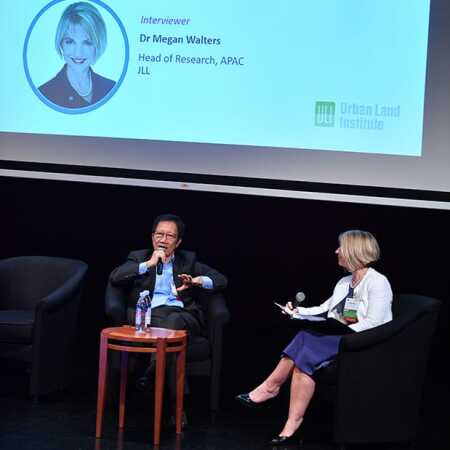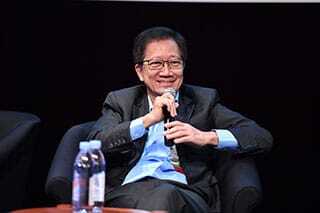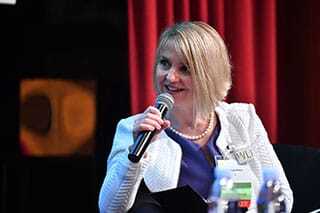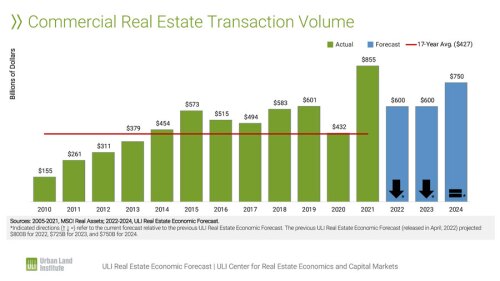SINGAPORE—ULI Asia Pacific Chairman N.H. Seek is chairman of Global Logistic Properties and former president of Singapore’s GIC Real Estate, the real estate component of Singapore’s sovereign wealth fund. Throughout a nearly 40-year career in the real estate industry, Seek has overseen scores of property-related deals and enjoyed an insider’s perspective of the evolution of the global commercial real estate investment industry from the highest levels of the profession.
During ULI Singapore’s recent annual conference, Seek, whose term as ULI chairman concludes June 30, took part in a “fireside chat” with me, during which he provided insights into issues such as the prospects for the global economy and how disruptive technology is affecting the logistics sector, as well as a review of his career path from university academic to leader of one of the biggest real estate investment funds in the world.
You are chairman of Global Logistic Properties, a US$46 billion group spanning several continents; you hold positions on many senior boards and have been at the forefront of the real estate industry for many years. In your view, where are we on the global map for the economy? Are we right to be optimistic? Is there a synchronised global upswing? And are you optimistic for the future?
Well, I think for the first time in a long while now, the four main economic engines are all firing—in America, Europe, China, and Japan. So, the physical economy looks pretty good. At the same time, when you have all the engines firing and unemployment now falling sharply—especially in the U.S.—you are going to see wage-push inflation, which in turn is going to push up interest rates. In fact, we’re seeing rates going up already, and that will have some impact on risk assets, investment yields, and so on.
I think I see dark clouds a little bit down the line. I think this year will be a good one, but problems are going to appear over the longer term. We have some serious political issues in the West, and we could be heading into a trade war, too.
You’ve been through several cycles now and you’ve been known for taking some contrarian positions. What positions might we think about taking today that are contrarian to received wisdom?
One of the worrying signs is that since the global financial crisis [GFC], the world is actually in a Goldilocks investment environment—very low interest rates, cheap financing, lots of liquidity. So, we’ve had a lot of asset price inflation. The worry is that interest rates have to go up, and that’s going to have a significant impact on yields of all assets, not just real estate. As we all know, when your yield is already low, a small change in the cap rate has a big impact on your value.
Of course, the positive side is that recovering economies generally create more demand, and that will have a positive impact on rentals. But it will take a lot of rental growth to make up for the falling value of a rising cap rate.
So, is it just, “be wary of debt and keep going through the cycle”?
Yes. I looked up the global debt-to-GDP ratio recently, and in both absolute and percentage terms it’s now higher than peak pre-GFC levels. That’s how much the world is indebted. So, if interest rates move out significantly, there’s going to be trouble.
Disrupters and Innovators
Let’s talk about disrupters and innovators, in particular for the logistics sector. GLP are now in 38 cities across China and I think 36 cities across the United States, with very different technology platforms in each. From your perspective, how is the role of technology shifting in the logistics world?
I think we are just at the cusp of a huge technological change. So those who can manage change and adapt quickly are likely to be the winners. But how do you go about it? I think the defensive thing I would do if I had a brick-and-mortar business is to stay very closely in tune with developments and trends in tech, and then pick certain technological platforms or businesses to invest in, even if it’s just a defensive strategy, because it diversifies your risk. Because if we continue to do things the way we have been, some of us are going to get hurt.
On GLP, I think the key is that we no longer see it as just a logistics warehouse business. We now look at it as a total logistics ecosystem that helps identify solutions for customers—how to find solutions, improve efficiency, and reduce costs. I’ll just give you two examples:
First, we have worked with McKinsey to come up with a site-selection tool. As you know, for distributors there is always a tradeoff between time, distance, and price. What this tool does, once you get delivery data into the system, is to advise on optimal sites to locate your distribution centres and optimise your distribution network. And you can imagine that once you have 100 or 200 large companies providing information, you start to have a very meaningful database.
Second, when you operate warehouses, the last thing you want is congestion in your docking area. You don’t know when trucks are arriving, you don’t know what goods they are carrying, and truck drivers don’t know which docks they are going to be unloading at. So what we have done is put tracking devices in the trucks which can tell us where they are, how far they are from the warehouse, and what goods they are carrying. We put up smart gates, and as the truck goes through each gate, a bit like the gantry in our ERP [electronic road pricing], the driver will know which loading dock to go to, and that dock can prepare for loading or unloading.
So, the interesting thing, and this is happening a lot, is the integration of the virtual content with the real-life aspect. We’re seeing this type of thing a lot these days, so, of course, data is a big deal.
Career Path
I can’t pass up the opportunity to remind everyone that at one point you worked at Jones Lang Wootton [JLW], and that you started your career in research. Can we talk about your early days? How did you go from being a researcher at Jones Lang Wootton, as it was then, to running GIC Real Estate?
At the beginning, I really didn’t have in mind to get into what I am doing now. To cut a long story short, I took a different path from most real estate practitioners. I thought I was going to be an academic, so I did a PhD. But while I was writing my thesis, I decided it wasn’t for me. But then I had to find a real job.
I wrote to a few companies, and one of the companies that responded to me very positively was JLW. And, I have to say the majority of the partners at that time had no clue what to do with a PhD.
We had a very smart, visionary chairman in Frank Charnock who could see the value of research in those early days and I guess, in explaining the reason for supporting my efforts, he said, “When you are in the business of being an intermediary, like Jones Lang Wootton, possession of information is the key to success.”
So I came in, they didn’t know what to do with me, and I had to find a way to prove I was worth what they were paying me. It was in the early ’80s, and the quality and amount of information available was really very bad. We had to go through the “bean-counting” stage to get all the data in place and then trap it as it came through the system. And because my PhD involved empirical work and collecting data that I needed to manage and analyse, that helped me crystallise what could be done.
At that time, JLW was the largest office-leasing agent in Australia. We had a lot of salespeople taking enquiries, but this information was simply lost. So, all I did was to design a small form and get the salesmen to fill it in as the enquiries arrived: What kind of company are you? How much space do you have? Where are you coming from? And then, once you collected this information, you could start to analyse it.
The interesting thing is that initially the salesmen thought this was a pain in the butt because they had to fill in another form, which they were reluctant to do. But once you are able to pull this information together and demonstrate how you can use it to help their job, they couldn’t wait for the next month’s information. And that’s still the case today.
In those days, the tools were more rudimentary, but, basically, it’s the same. You collect all the information you want to. First, you must know what to collect. You must know the right questions to ask. And then, whereas it’s fine to get the computer guys to put it together, you still need the businessperson to be able to make sense of it, to ask the right questions.
From there you rose rapidly through the ranks of JLW to finish as one of the most senior partners in the firm, and GIC came and knocked on your door. Can you talk me through that section of your career?
I eventually became a senior partner in JLW, where I was given the job of managing the advisory business. The thinking was to split the transactional business from the advisory business to clearly preclude potential conflicts between the two sides. The idea then was also to start a fund management business, but I could only run that for two years before GIC decided to make me an offer to take me home The idea then was to start a fund management business, but I was only running that for two years before GIC decided they would take me home. At that time, I was nicely settled in Australia, and most people were very shocked when I decided to leave. And at the time I had some personal reasons to want to come home to Singapore. GIC gave me an opportunity to move from what was essentially a sell-side to a buy-side business. But when I came back here, it was a relatively small portfolio.
Yes, because you took it global. How did that come about?
It was already global in the sense that that was GIC’s mandate. But most of the investment at the time was in the United States, even though it was a global portfolio. In those days, the U.S. was the only market with the breadth and depth for an institutional investor. We decided to make it significantly more global in the late ’90s, taking more investment into Asia Pacific markets, in particular Japan. That was in 1997.
What gave you the courage to make that bet?
We’d been looking at investing in Japan for a long time, but it was impossible. That’s why there was such a long period before GIC became truly globalized: there were just not many places in the world where you could invest in real estate, and in Japan, technically, you were not allowed to invest. There was no restriction in law, but in reality it was not possible because the big conglomerates were holding the assets, so it was impossible to buy serious commercial real estate in the Tokyo central area.
But then the bubble burst, and in ’97 we had this opportunity. So, we took the plunge, and it turned out well. Of course, we took advantage of the fact that Japan at that time was very weak economically, and we were able to also get very good pricing for the building contracts apart from winning the tender for the land at a reasonable price.
How did you grow a successful team, because the team was relatively small when you started there?
Two things. The human capital, the human resource, was one side. But the other thing was the system, because at that time there wasn’t a model to follow in cross-border investment; we had to create our own system. How do you assess risk, for example? So, we had to build a risk management system within GIC to enable us to implement our strategy and policies. And we had to do it from scratch.
And the other thing is, of course, people. GIC already had good people. Don’t forget that GIC was one of the earliest sovereign funds to have an allocation to real estate, in 1982. I only joined in 1996. They had good people and a policy of sending Singaporeans to be trained in different parts of the world. But clearly that wasn’t enough. And the way that we invested is something that evolved over time. In the early days, we were simply investing in whole assets in America. But over the years, the whole investment model changed, and we have been able to do a much wider variety of things.
So, you could say that we expanded the opportunity set during that time, both in terms of geography as well as the types of investment, whether it was equity or debt, or different types of equity, development, nondevelopment, and so on. We chose largely at the time to be a direct investor; in other words, we tried not to use intermediaries or to invest through funds.
But at the same time, there are certain areas where it’s much more efficient to use intermediaries. For example, if you are investing in industrial assets, each property is really quite small relative to our fund size, so in that case it’s much better to find someone to work with and have a platform that allows a person with skin in the game to run the business. UL
Megan Walters is the Singapore-based head of research for Asia Pacific at real estate advisory firm JLL.
This article appeared on page 45 of the Asia Pacific Issue of Urban Land, Spring 2018.





